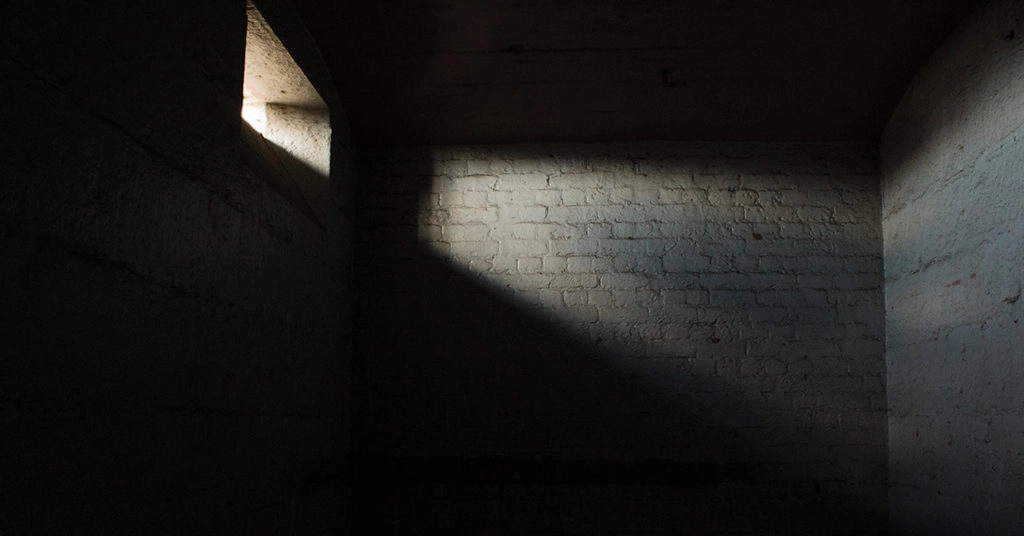Recently, I watched a time-lapsed video of Nicholas White, a man stuck in an elevator for 41 hours. It was 11 p.m. when he took an elevator down the McGraw-Hill Building in New York, heading down to smoke a cigarette.
Instead, he was holed up in a square room, with no windows, food, water, or contact for almost two days.
Some may liken that to a prison.
White had his freedom taken away for over 40 hours; throughout the video, it’s clear he grows more and more desperate, shouting down the elevator shaft only to hear nothing in return.
He had no idea when he would be released.
Being in a small, contained area with no timetable of release can seem like a form of torture, which is why it’s surprising that a similar practice is so common in prisons and remand centres alike.
Solitary confinement in prison settings often includes a prisoner being isolated from most human contact for an unknown period of time. There are usually cameras in the area, often the only form of contact available save for brief interactions with the correctional officers providing food and water.
It’s often used as a form of punishment or a method to protect other inmates and correctional officers from someone who is acting dangerous. It can also be used to protect one inmate from others.
Michael Seredycz, an assistant professor in MacEwan University’s sociology department, thankfully has no first-hand experience with solitary confinement, but he has looked at the psychological and emotional effects that it, along with prison in general, can have on a person.
“[People who experience solitary confinement] lose all cognitive senses of time, place, feelings of safety,” he says. In confinement, prisoners often have no clue when they will be fed; they don’t know when they are getting out, either.
Solitary confinement can be associated with post-traumatic stress disorder, anxiety and depression. But Seredycz argues that it’s not just confinement that can lead to adverse effects; the very notion of being in jail (or in a remand centre) can have an effect on a person’s psyche.
“I don’t think you’ll ever walk out [of prison] the same person,” says Seredycz.
“If you have been incarcerated, there’s a very high likelihood that you’ve developed some sort of mental health issue,” he explains.
“The reason is because you’ve had your freedom taken away.”
Comparing prison systems Seredycz has little doubt that the punitive nature of solitary confinement is detrimental to prisoners, yet it is still a widely-used technique in prisons and remand centres across North America.
According to the World Prison Brief, the prisoner per capita rate in the United States is almost seven times the size of Canada’s; over 2.2 million people are incarcerated throughout the U.S., compared to less than 40,000 in Canada.
“Canada has got one of the better prison systems in the world,” says Sandy Jung, an associate professor of psychology at MacEwan. She adds that compared to the U.S., Canada’s system is much less punitive, and relies much more on the rehabilitation of the prisoners.
America’s prison system has much deeper roots in punitive measures, which could explain the large incarceration rate in the United States.
“Punitive approaches are not effective in reducing crime,” says Jung. That being said, Canada isn’t without its own issues.
In prison systems, prisoners are often psychologically evaluated. But, in remand centres, because they are often sentenced to a significantly smaller amount of prison time, they may not have the opportunity to be psychologically evaluated. According to Jung, this can mean mistakes in rudimentary evaluations. When low-risk criminals are lumped in with high-risk offenders, the low-risk offender becomes more susceptible to becoming high-risk.
She says she doesn’t often see this change in adults, but moreso teens that are entering the system for the first time.
“Young offenders are much more impressionable,” Jung explains.
“They go in the system, learn from the other guys how to be better criminals, and now they’ve been in the system, so they’re used to it and know what to expect.”
Mistakenly placing low-risk offenders in high-risk environments can also mean these prisoners could be especially vulnerable to developing mental illnesses during isolation in solitary confinement.
Today, correctional officers are taught to use the Risk-Need-Responsivity model, or RNR, to decide how to deal with a specific prisoner. It was introduced in 1990, according to Public Safety Canada, and has since been the model of choice for dealing with offenders.
For the assessment and evaluation of offenders, correctional officers are taught to focus on the three principles. The risk principle is to assess the likelihood of an offender to reoffend, in order to place them in the correct stream (low-risk or high-risk). Then, they acknowledge the need principle, where correc- tional officers and medical examiners will try to determine the characteristics or issues of an offender that directly relate to their likelihood to reoffend, and they will target them. Finally, the responsivity principle dictates that officials try to ensure that offenders benefit from intervention by offering treatment customized to the specific needs of each offender.
Jung says the curriculums for new correctional officers contain an abnormal psychology course to help them understand mental health a bit better, but the guards with seniority often do not have the same training. As a result, the new ideas might not be completely implemented.
“It becomes sort of a watered down version of what [newer correctional officers] are taught,” says Jung.
Ahead to the future
Both Seredycz and Jung have their fair share of reservations regarding solitary confinement, but they also understand why it’s used in prisons and in remand centres.
“I don’t think it’s a very good deterrent, but it’s all we have,” says Seredycz.
There are few avenues that correctional facilities can use to protect inmates from themselves and others, while also protecting the correctional officers.
“We don’t want to be too punitive,” he adds.
If solitary confinement will continue to be practiced in correctional facilities, Jung says the aforementioned training overhaul needs to take effect in all levels. “I think corrections and forensics is using the RNR [approach], but sentencing necessarily isn’t using that approach,” Jung says. “It has to be on a sentencing level before we go any further.”
And though both professors worry that knowledge will supersede implementa- tion in the remand system, they remain optimistic that the overhaul on procedures will continue.
“It’s hard to get people out of their old ways,” Jung says, “but everyone needs to be trained on [proper procedures].”
Photo by J. Miller/Flickr creative commons.





0 Comments